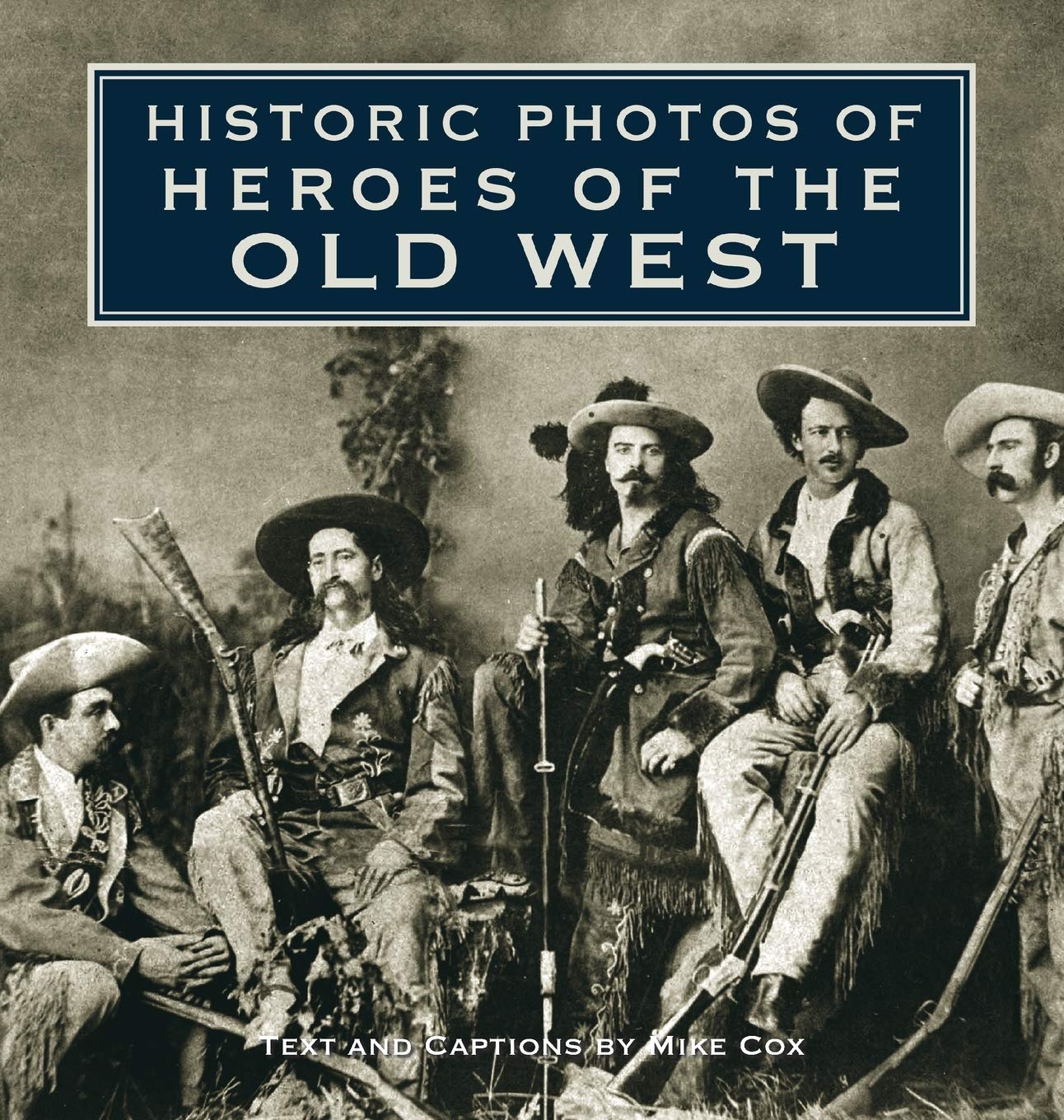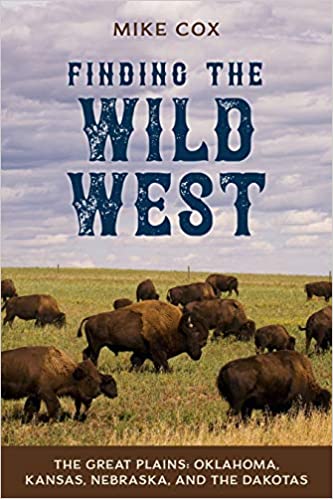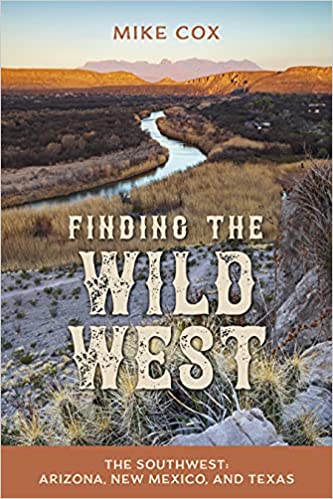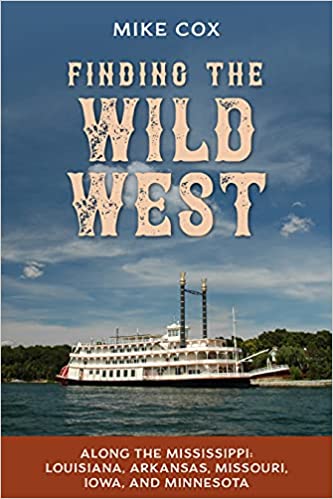
Writing Nonfiction: Pro tips from an award winning author
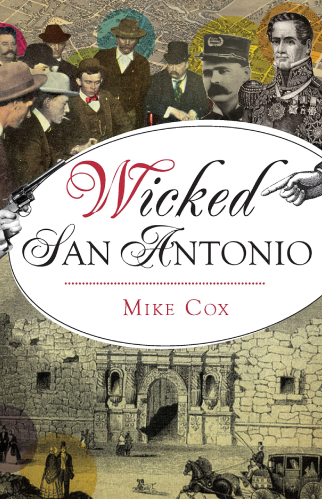
Wicked San Antonio
Residents of the Alamo City tolerated scores of cockfighting pits, gambling joints, opium dens, around-the-clock saloons and other places of ill-repute. Some disturbers of San Antonio’s peace, like Judge Roy Bean, left town to achieve greater notoriety elsewhere. Others, like the thief who stole the McFarlin diamond, seemed to vanish into thin air. But all of them left a page-turning story behind. Mike Cox catalogues San Antonio’s most infamous incidents and miscreants.

Book Hunter: How to collect books, sell them, and one day let them go
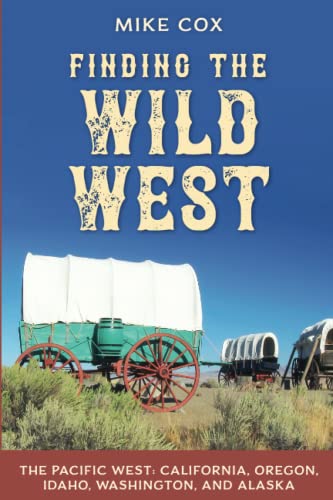
Finding the Wild West: The Pacific West
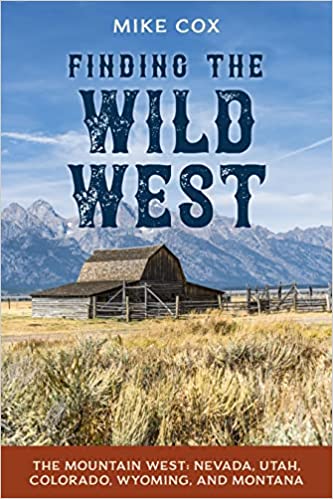
Finding the Wild West: The Mountain West: Nevada, Utah, Colorado, Wyoming, and Montana
From the famed Oregon Trail to the boardwalks of Dodge City to the great trading posts on the Missouri River to the battlefields of the nineteenth-century Indian Wars, there are places all over the American West where visitors can relive the great Western migration that helped shape our history and culture. This guide to the Mountain West states of Nevada, Utah, Colorado, Wyoming, and Montana–one of the five-volume Finding the Wild West series–highlights the best preserved historic sites as well as ghost towns, reconstructions, museums, historical markers, statues, works of public art that tell the story of the Old West. Use this book in planning your next trip and for a storytelling overview of America’s Wild West history.
Finding the Wild West
Finding the Wild West: The Southwest: Arizona, New Mexico, and Texas
Finding the Wild West: Along the Mississippi: Louisiana, Arkansas, Missouri, Iowa, and Minnesota
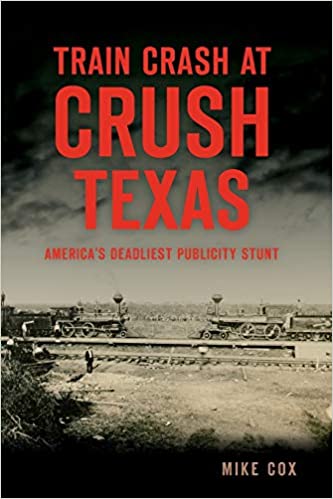
Train Crash at Crush
On September 15, 1896, Crush boasted the highest population in Texas. Built near Waco, the town provided the staging ground for a publicity stunt ramming two trains together at top speed. Showrunner and Katy Railroad official William Crush thought he had planned for every contingency. But when elephant-sized chunks of steam locomotive began raining down into the packed stands, the extravaganza quickly unraveled into one of the Lone Star State’s most confounding tragedies. The soon-to-be famous Scott Joplin commemorated the debacle in “The Great Crush Collision March,” and entrepreneurs like “Head-On Joe” Connolly of Iowa continued the tradition of the staged locomotive duel for decades. But the stupefying incident still slipped into the back pages of Texas lore. In the first-ever book on the subject, writer-historian Mike Cox finally tells the full story of the Crash at Crush.
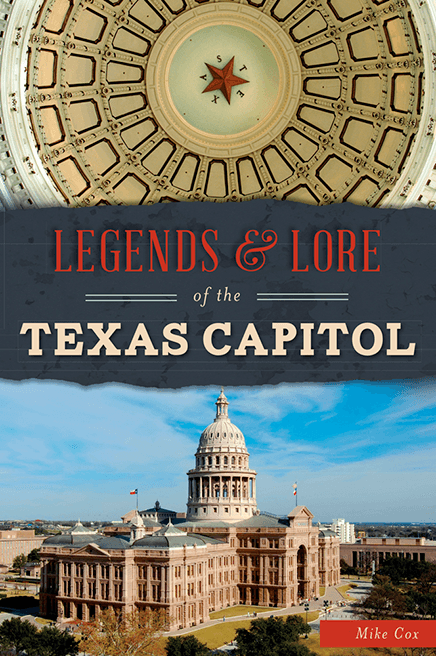
Legends & Lore of the Texas Capitol
From its beginning as one of the most ambitious construction projects west of the Mississippi, the imposing red granite Lone Star statehouse loomed large in Texas lore. The iconic landmark rests on a foundation of election rigging, an unsolved murder, land swaps and pre-dedication blackmail. It bore witness to the first meeting between LBJ and Lady Bird, as well as a bizarre resolution honoring the Boston Strangler. Mike Cox digs up a quarry’s worth of the capitol’s untold history, cataloguing everything from its ghost stories to its public art and collectible tourist kitsch.
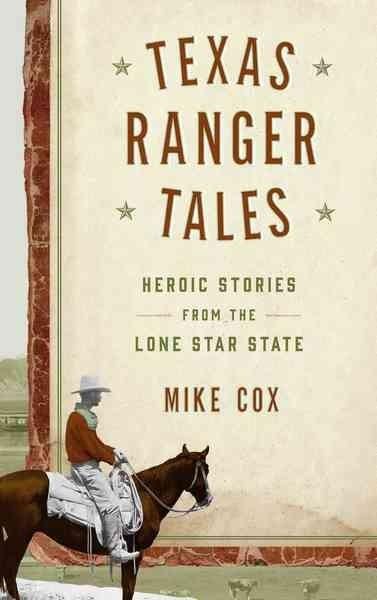
Texas Ranger Tales
They were men who could not be stampeded, said the late Colonel Homer Garrison Jr. of the men who wore the badge of the Texas Rangers. Colonist Stephen F. Austin, during the earliest days of Anglo settlement in Texas, wrote that he would employ 10 men to act as ‘rangers’ for the common defense… and thus, the famous Texas Rangers came into being. An important part of Texas history, these few good men were distinguished, unique even among themselves, and soon, even mythical. The myths and traditions surrounding the Rangers have endured and evolved. Today the Texas Rangers are among the most respected law enforcement agencies in the world. Texas Ranger Tales is a collection of legendary Texas Ranger stories, from new takes on the famous tales to fresh stories few, if any, have heard.

The Texas Rangers
Austin writer-historian Mike Cox explores the origin and rise of the famed Texas Rangers. Starting in 1821 with just a handful of men, the Rangers’ first purpose was to keep settlers safe from the feared and gruesome Karankawa Indians, a cannibalistic tribe that wandered the Texas territory. As the influx of settlers grew, the attacks increased, and it became clear that a larger, better trained force was necessary. Taking readers through the major social and political movements of the Texas territory and into its statehood, Cox shows how the Rangers were a defining force in the stabilization and the creation of Texas. From Stephen Austin in the early days through the Civil War, the first eighty years of the Texas Rangers were nothing less than phenomenal, and the efforts put forth in those days set the foundation for the Texas Rangers who keep Texas safe today.
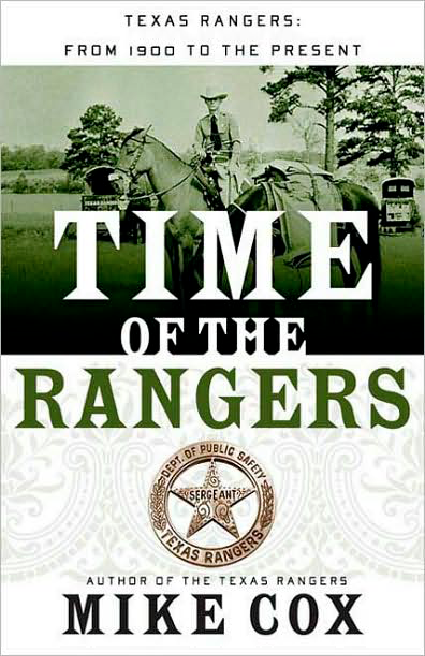
Time of the Rangers
Following up on his magnificent history of the 19th century Texas Rangers, Mike Cox now takes us from 1900 through the present. From horseback to helicopters, from the frontier cattle days through the crime-ridden boom-or-bust oil field era, from Prohibition to World War II espionage, to the violent ethnic turbulence of the ‘50s and ‘60s–which sometimes led to demands that the Texas Rangers be disbanded, Cox takes readers through the modern history of the famed Texas lawmen. Cox’s position as a spokesperson for the Texas Department of Public Safety allowed him to comb the archives and conduct extensive personal interviews to give us this remarkable account of how a tough group of horse-borne lawmen–too prone to hand out roadside justice, critics complained–became one of the world’s premier investigative agencies, respected and admired worldwide.
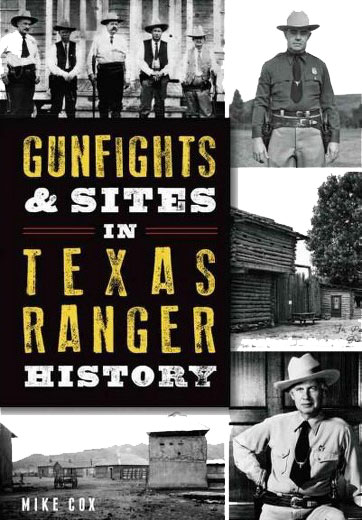
Gunfights & Sites in Texas Ranger History
Since colonizer Stephen F. Austin proposed hiring ten rangers for the common defense in 1823, the Texas Rangers have protected the Lone Star State from its enemies with dedication and fortitude. All across Texas are places where Rangers made history. From the Alamo to nearly forgotten graves and battle sites, important landmarks in the story of these legendary lawmen lie in every corner of the state. Historian and author Mike Cox reveals history hiding in plain sight and true tall tales of the world-famous Texas Rangers.
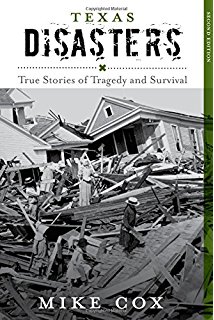
Texas Disasters
True accounts of major disasters in Texas history are retold in this engagingly written collection. In this part of the country tornadoes are a frequent threat, but in addition to the many violent twisters, Texas residents have experienced fires, floods, drought, blizzards, shipwrecks, and other devastating events, including a yellow fever epidemic in 1867, which earned that year the grim moniker “The Year of Death.” Each story reveals not only the circumstances surrounding the disaster and the magnitude of the devastation but also the courage and ingenuity displayed by those who survived and the heroism of those who helped others, often risking their own lives in rescue efforts.
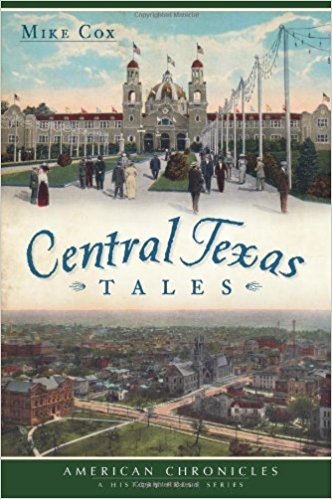
Central Texas Tales
Central Texas is an area as diverse culturally as it is geographically. Bordered by Hill Country in the west, green farmland in the east and Waco and New Braunfels in the north and south, this area has drawn settlers from around the globe for over two centuries, leaving their mark and their stories along the way. From a surprising story of nineteenth-century psych ops (psychological warfare) at Fort Mason and what really happened to Bevo, the UT longhorn, in 1920 to Mrs. Ross’s Croghan Cobbler recipe and rumors of a Lone Star visit by old Abe himself, historian Mike Cox regales readers with over fifty stories about the fascinating people, history and places of middle Texas.
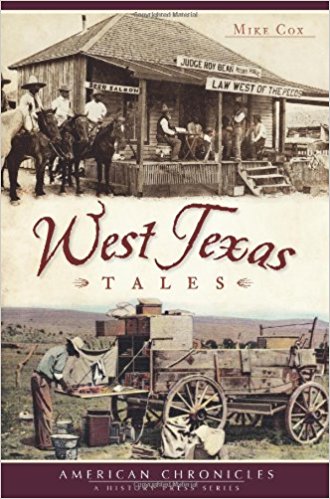
West Texas Tales
Historian Mike Cox has been writing about Texas history for four decades, sharing tales that have been overlooked or forgotten through the years. Travel to El Paso during the Big Blow of 1895, brave the frontier with Elizabeth Russell Baker, and stare down the infamous killer known as Old Three Toe. From frontier stories and ghost towns to famous folks and accounts of everyday life, this collection of West Texas Tales has it all.
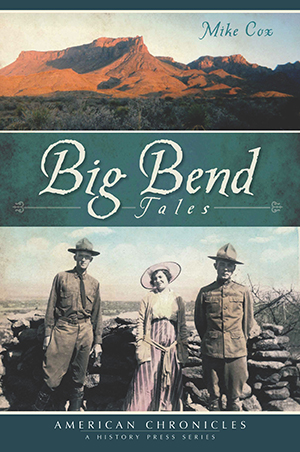
Big Bend Tales
Travel deeper into the Texas outback with writer-historian Mike Cox as he recounts the lesser-known stories from Alpine, Fort Davis and Marfa. Revisit the grandeur of Alpine’s Holland Hotel, peer through the telescope at the McDonald Observatory and dip your toes in the water hole at Ernst Tinaja, if you dare. Travel back to a time when the Comanche Trail stretched one thousand miles from Kansas to Mexico, making the Big Bend difficult to defend and impossible to resist trying. Celebrate Cinco de Mayo, the anniversary of Benito Juarez’s decisive defeat of the French at Pueblo in 1867. If nothing else, come for the lore and history that is as extensive in the Big Bend region as the mountain passes and desert stretches themselves.
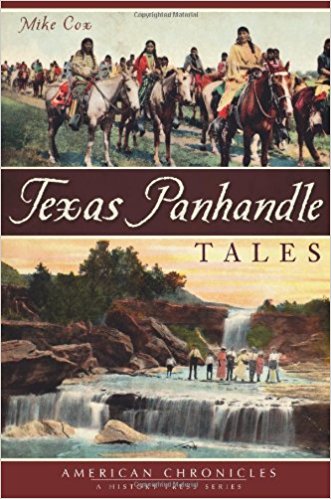
Texas Panhandle Tales
The Texas Panhandle is like a whole ‘nother country. The area stretching from just south of Lubbock all the way north to Oklahoma is filled with ranch land, oil fields, windy plains, and some of the Lone Star State’s most unique history. Meet the duck that started a gun battle in Oldham County and find out how Kate Polly’s pancake flipping saved her life. Or witness Gene Autry’s days as a performer in Childress and a different sort of gold rush in Palo Duro Canyon as historian Mike Cox shares his favorite pieces of the Panhandle’s past.

Historic Photos of Texas Oil
On January 10, 1901, near Beaumont, Texas, an unremarkable knoll of earth the world would soon call Spindletop shot a geyser of oil a hundred feet into the air, confirming the belief of Pattillo Higgins that black gold lay buried there. The Texas oil industry had begun in earnest, and neither Texas nor the world would ever be the same. In the years to come, Texas oil would fuel the nation’s automobiles and help to bring victory to the Allies in both world wars, shaping America’s destiny throughout the twentieth century. Join author and historian Mike Cox in this photographic visit to the heyday of Texas crude as he recounts the stories of key oil-patch discoveries around the state. Nearly 200 images in vivid black-and-white, with captions and introductions, offer a roughneck-close look at this uniquely American tale of dry holes and gushers, ragtowns and riches, boomtowns, blowouts, and wildcatters gone broke.
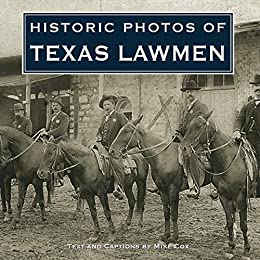
Historic Photos of Texas Lawmen
The history of law enforcement in the Lone Star State goes back well before photography, dating to Texas’s days as part of the Spanish empire. After that Texas became a province of Mexico and for nearly a decade stood among the nations as an independent republic before becoming the 28th state in the Union in 1845.
Format: Kindle Edition
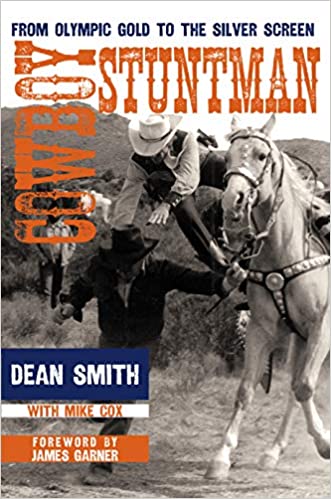
Cowboy Stuntman: From Olympic Gold to the Silver Screen
